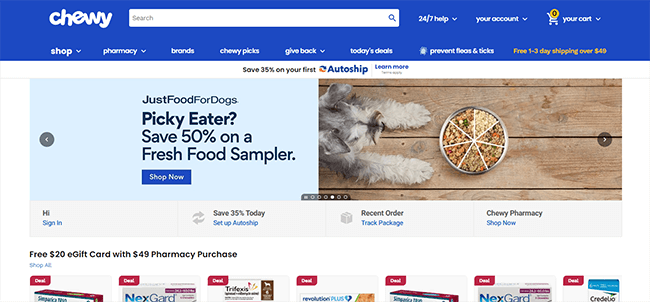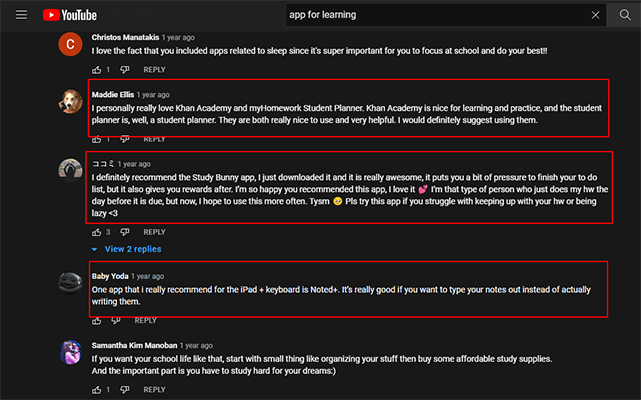How To Come Up With New Product Ideas: 20 Proven Methods

Are you researching how to come up with product ideas?
You’re not alone. A lot of people want to start an online business and sell their own products. However, coming up with a product idea isn’t as easy as it sounds.
The next big product is out there. You just might need a little push to help you find it.
In this post, we’re breaking down the best ways to uncover product ideas for your business.
Product research
Where do you find new ideas for a product? Well, you can either find a problem and then think of a product that can solve it. Or you can look at an existing product and think of ways to make it even better.
These are great places to start your journey.
Look for a problem with no solution
All products were made to solve a problem. So if you’re looking for product ideas, think of a problem that you’d like to solve and go from there.
There’s more to it than that, of course.
You’ll need to be knowledgeable about whatever niche you’ve decided to step into. At the very least, you should be committed to doing your research.
The product idea could jump at you straight away. Or it could take you anywhere from days to months to find the answer. So you’ll need some patience as well.
While finding product ideas through this method might seem unlikely, it’s how most successful products started.
Improve an existing product
Some businesses found success in improving an existing product. That means they found ways to do something better, faster, or cheaper. This could be a better option than coming up with a product from scratch.
Take this self-heating butter knife as an example. Butter knives have existed for a very long time. But adding the self-heating component makes it ten times better, right?

Improving a product means a lot of research and testing. And if you’re making changes to a specific product, you might want to see if there’s any patent that’ll prevent you from doing so. You don’t want to get into legal battles with patent owners.
Depending on the product category, you might end up spending a lot on research and development — just something to keep in mind.
Develop product add-ons
Sometimes it’s better to create add-ons to products that already exist. Not everyone can build cell phones, right? But most people can sell mobile phone cases if given the resources.
Find a product and see what possible add-ons its customers might need. And this isn’t just for physical products. Add-ons are also popular for digital goods and services.
It’s better to start creating add-ons for products that people would likely own. Take knives for example. If people want to take their knives on the road, what are their options? You can create bags specifically made for housing knives and sell them online.
Bring back an old product
You can bring back an old product and start selling it again.
For example:
If you’ve sold online courses before, you can remove older references and replace them with updated information. You can then sell online courses to a new audience. Online course developers do this all the time. That’s why you sometimes see courses with several version numbers.
Even past customers can benefit from updating a course since they’ll likely have access to the new content too.
Go look at some of your older products and see if there’s anything there that you could resell to a new target market.
Combine product features
Combining two products or features could result in a great idea. Look no further than the Swiss Army knife. Combining multiple tools in one small package might have seemed impossible at the time but it totally worked.
And history is full of products just like that.
Think of two or more products or features that would go well together. Then do some research to see if there’s already a product like it. If there are none, you should work on the product idea to see if there’s any merit to it.
And even if there’s already a product like the one you thought of, you can check if you can do it better.
Look at expiring patents
You can go to the United States Patent and Trademark Office (USPTO) website to find information about expiring patents. A patent can only be renewed a couple of times before it becomes part of the public domain. That means other people can start legally selling a product that was once protected by law.

And if you find a product that you like but its patent is still active, you can entertain the thought of buying the rights though that can get expensive real fast.
At the very least, you might find a patent that could inspire you.
Read studies
Reading different studies can lead to new product ideas that you have not even considered before. At the rate technology is evolving, it’s easy to find solutions to an existing problem where none existed before.
Finding recent developments in your niche might push you to innovate your products or services.
Competitor research
Another way to find product ideas is by looking at what many entrepreneurs are doing.
And just to be clear — no one is suggesting that you copy what other businesses are doing. But you can generate your own ideas by looking at what their customers like and dislike.
Learn from what’s working and use it to come up with product ideas of your own.
Look at industry influencers
If you’re in a competitive field, see who the industry influencers are in your category and listen to what they have to say.
This is especially true for those in the tech space. You’ll have no problem finding vloggers, reviewers, and enthusiasts sharing their opinions about the latest and greatest products. And if you listen closely, they might slip in a couple of cool product ideas that you could start working on.
And who knows? Maybe these influencers are open to working together on a project. That will help you gain some exposure once the product is ready to be sold.
Go to marketplaces
Yes, you can go to different online and offline marketplaces to find products that might work for you. But don’t just stick to popular sites like Amazon and Walmart. You should explore marketplaces that specialize in whatever niche it is you’re planning to enter.
For example:
Did you know there’s a marketplace for pet products called Chewy?

Finding these niche sites will help you understand what your target market needs the most. You could then use that information to fill the hole in the market with your product idea.
Going to marketplaces will even let you know how much your potential customers are willing to pay for certain products.
Visit competitor sites and social pages
If you’re working in a specific market, then you can go ahead and check out the top players in the field. You’ll want to see what’s the current hot trend.
It doesn’t matter if they’re large or small businesses. You can gain a lot of insight from their websites and social media platforms. The existing products will show you where the industry is today. But don’t sleep on products they’re working on right now as that tells you where the industry is headed.
Companies often reveal products they’re working on in their quarterly and annual reports.
These competitor analysis tools will help you conduct this type of research more efficiently.
Visit B2B wholesale marketplaces
There are marketplaces for the average consumer. Then there are marketplaces for B2B wholesalers like Handshake, Tundra, and Faire.

So what’s the difference?
Your average online marketplace tells you what customers are looking for. B2B wholesale marketplaces will tell you what ecommerce site owners think are worth selling.
You’ll find more product inspirations on B2B marketplaces. While you won’t see all of these products on sites like Amazon, there are hidden gems here that might be worth exploring further.
If anything, you’ll know at which price points you can sell your products to retailers.
Customer research
You can also gain a lot of insights from your customers that can lead to your next big idea. While you’re selling products that they already like, they know what other products they need to succeed.
This advice also works for those who are just about to launch their ecommerce business. You can look at what your competitor’s customers are saying online to see what type of products they want.
Conduct a customer survey
Customer surveys aren’t that hard to do. There are plenty of third-party apps that you could use to prompt site visitors or paying customers to answer a quick survey. You can also include it in your email marketing campaign using one of these email automation tools.
But if you don’t have the budget for that, you can use any social media platform to communicate with followers. You could use a social media scheduler to ensure you’re encouraging suggestions from your audience on a regular basis.
If you have a supportive community, they’ll go out of their way to answer your survey. They’ll even appreciate the fact that you’re trying to develop new products and features.
Here’s a tip:
You can leave a box where customers can type in suggestions. You’ll be surprised by the products that creative people come up with.
Have a brainstorming session
If you prefer to get your product ideas from people you know personally, then a brainstorming session is exactly what you need.
And the good thing about brainstorming sessions is that they can be a casual affair. It could be as simple as inviting friends over to your house and talking about business ideas over food and drinks.
You can find inspiration from what your friends might say — or not. But it’s going to be a good time no matter what. So you just can’t lose. It’s worth a shot.
Go to forums
People go to forums to share their knowledge and ideas. So if you’re looking to create physical or digital products, you can try your luck there. Someone might have posted a great product idea that’s going to waste unless you do something about it.
Can’t find product ideas in any of the ongoing conversations? Then start your own thread.
You can ask people about what might work in your niche. And if you already have a vague idea of what you want to do, you can ask other users for their feedback. You might even find people who’d be willing to work with you on the project.
Read YouTube comments
Finding great product ideas on YouTube is a bit of a long shot — that is if you don’t know where to look.
Here’s a screenshot pulled from the comments section of a video about apps for learning. Some commenters named a couple of apps that they like and their reasons why. If someone like you could somehow create an app that addresses everything they like, you just might hit a home run with your product.

If you watch YouTube videos of product announcements or commercials, you could find a new idea from one of the comments. Even if a comment is made in jest, those who are paying attention can walk away learning what potential customers look for in a product.
Visit local communities
Sometimes you need to travel to local communities to find products you may not even know existed. Explore other places in and around your city. Go to local mom-and-pop shops to see what’s selling there.
You might find a product idea worth pursuing after a couple of trips.
Travel to other countries
A lot of business owners found new products to sell by going to other countries. And they don’t intentionally seek them out at all. Most just happen to stumble upon new products by talking to locals or exploring different shops.
It’s not just about finding new products. By traveling to new places, you could discover a new way of making a product. Or you could find an untapped resource that you could turn into a new product.
Yellow Leaf Hammocks wouldn’t have started if one of the owners hadn’t traveled to Thailand and met the craftswomen who weave each hammock they sell.

Market research
If you can’t find new product ideas from competitors or customers, then why not look at what the market is saying? You can explore trends in the business by looking at what’s trending in your niche.
Below are just a couple of ways you can go about doing that.
Attend product conventions
Product conventions are not only great for networking but also for finding product ideas. You can come up with new product options to explore by seeing what innovations the competition is focusing on.
Attending conventions can also help you ask the right questions that will eventually lead you to a product idea.
You can also meet someone on the convention floor that might say something to inspire you to create a new product. You’ll be surrounded by people who are passionate about the same niche. That’s why conventions are a rich source of product inspiration.
Look at social media
Social media groups are full of people with new product ideas. This is especially the case for groups targeting hobbyists.
In the photography and videography scene, for example, you’ll find people who are looking for specific products that might not exist yet. You got people looking for cages for a new camera setup. Some want cheaper mobile lighting solutions for their rig.
And this is also the case for other hobby groups. So it’s worth joining these groups just to see what people are talking about.
Perform keyword research
If you have access to a keyword research tool like SE Ranking or KWFinder, you can use it to learn what terms people are typing into Google Search. While some of the words and phrases they use might not be as useful, you could find keywords that lead you to new ideas.
How to validate product ideas
It’s one thing to come up with a new product. It’s a whole other ballgame to determine if your new product will be accepted by everyone.
So how does one validate a product idea?
Here are a few ways you can test a product idea to see if it has any chance of selling or not.
Crowdfunding platforms
Crowdfunding platforms are great not only because they help fund product launches but also help validate product ideas.
If people like a product, they’ll back up the project. If you hit your goal, it only goes to show that there’s a demand for what you’re offering.
Kickstarter is arguably the most famous crowdfunding platform right now but there are others out there like Indiegogo and GoFundMe.

Even unsuccessful campaigns can be a source of inspiration — or a lesson on what not to do.
Preselling
If you already have an audience, you can presell your new product to see if there’s any demand for it. You can hype up the release a couple of weeks or months in advance to give it the best chance of selling.
Another advantage of pre-selling is that you’re able to anticipate how many people will order the product. That means you can produce the product in quantities that you need which helps you save money.
Say you’re selling water bottles, for example, and only 1,000 customers pre-ordered. Then there’s no need to order 5,000 bottles.
Prototypes
If you’re worried about whether the product will actually work or not, then what you need to do is to develop a working prototype.
Prototypes do a number of things. They help you visualize what the final product might look like. They also see if the product will function as intended. You’ll be able to see what changes need to be made.
You’ll also need a working prototype if you’re looking for an investor in your small business.
Focus Groups
Businesses need focus groups because that’s how they know if a product works or not.
Focus groups go beyond functionality though. They can comment on just about anything so long as it’s related to the product. They’ll let you know if the product color is wrong if you got the name right, and how it makes them feel.
While listening in on focus groups hate on something you’ve worked so hard on, it’s better to see its flaws before it’s launched to the public.
Besides, the opposite is just as true. If the focus group ends up loving your product, you’d feel validated.
Beta testing
Beta testing is like a soft launch of a digital product. You can make your product available to certain users for a short period before rolling it out to everyone else. The goal is to find and fix all the technical issues in a more controlled environment.
People who want to access a product’s beta version will often have to sign up. If you find that there are a lot of people trying to gain access to the beta version, that’s a good sign that there’s some demand and excitement for your product.
Product validation questions
Here are a couple of questions you’d want to ask yourself when validating a product.
Knowing the answers to these questions will make it easier for you to promote and sell your product when the time comes.
- Who is this product for?
- What problems does it solve?
- Can the product be built?
- Can the product be sold at a reasonable price?
- Will people be able to use it?
- Is there a demand for the product?
- Where will you sell the product?
- Who are your biggest competitors?
- Where will manufacturing take place?
- Is the product legal to make and sell?
- Do you have the resources to produce the product?
- How will you scale the production?
- How many people will you need to manufacture and sell the product?
Conclusion
There’s a lot that goes into researching new product ideas. But with the right attitude and determination, the whole process can become a lot simpler. You might even end up enjoying the search for business ideas.
What’s most important is that you set your expectations before starting your journey.
Finding new product ideas can take time. And there’s no other way around it — you will have to do plenty of research. But the end result is rewarding especially if you end up making a ton of money from your new product.
But if you’re still unsure, check out our data-driven guide to the best products to sell online for some additional inspiration.
Good luck with your search for new product ideas!
And if you’re curious about the technology you’ll need to sell your products, be sure to check out our posts on ecommerce platforms, print-on-demand sites, and platforms to sell digital products.
Disclosure: Our content is reader-supported. If you click on certain links we may make a commission.
